Address
304 North Cardinal
St. Dorchester Center, MA 02124
Work Hours
Monday to Friday: 7AM - 7PM
Weekend: 10AM - 5PM
Address
304 North Cardinal
St. Dorchester Center, MA 02124
Work Hours
Monday to Friday: 7AM - 7PM
Weekend: 10AM - 5PM
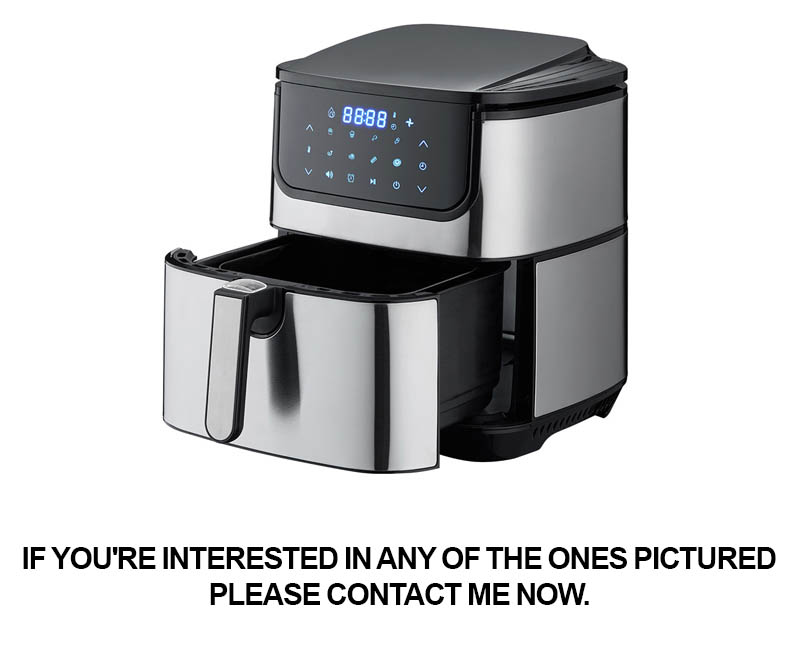
In a world where culinary innovation meets technological advancement, the kitchen appliance industry is constantly evolving. One such marvel that has captured the hearts of consumers worldwide is the air fryer. Once a niche product, it has now become a staple in many homes across Europe and North America. This shift in consumer preference has sparked a wave of innovation, particularly in the realm of assembly lines. The rise of the automated air fryer assembly line marks a pivotal moment in the industry, promising not just efficiency but also a new era of product development and market trends.
The air fryer, once a niche kitchen appliance, has seen a meteoric rise in popularity across the Western markets of Europe and North America. This surge in demand can be attributed to a perfect storm of factors that have collectively pushed the air fryer from the periphery of kitchen gadgetry to the forefront of culinary innovation.
At the heart of this transformation lies a growing health consciousness among consumers. With the rise of fast food and processed snacks, there’s been a shift towards more wholesome, home-cooked meals. Air fryers offer a healthier alternative to deep-frying, as they use a fraction of the oil while still delivering that crispy texture. This health halo has made them a staple in health-conscious households, fitness enthusiasts, and those looking to reduce their oil intake without sacrificing taste.
Convenience is another key driver. Modern life is fast-paced, and time-strapped consumers are always on the lookout for shortcuts that don’t compromise on quality. Air fryers provide a quick and easy way to cook a variety of foods—fries, chicken, fish, vegetables, and even desserts—all with minimal effort and cleanup. The compact size of these appliances also means they can easily fit into small kitchens or even on a countertop, making them a must-have for busy lifestyles.
Culinary curiosity has also played a significant role. As people explore different cuisines and cooking techniques, they’re drawn to appliances that can mimic the results of traditional cooking methods. Air fryers allow for a range of cooking styles, from the crispy outside of a French fry to the succulent inside of a roasted chicken, without the need for a deep fryer or an oven.
The influence of celebrity chefs and food influencers on social media has been pivotal in popularizing air fryers. With stars like Gordon Ramsay and Nigella Lawson advocating for the appliance in their cooking routines, the air fryer has become a symbol of modern culinary cool. These chefs often share recipes and cooking tips on platforms like Instagram and YouTube, driving both engagement and sales.
Retailers have also played a crucial role in the air fryer’s ascent. Supermarkets and home goods stores have prominently featured air fryers in their aisles, often pairing them with recipe books and cooking demonstrations. This has not only made the appliance more accessible but also educated consumers on how to use them effectively.
The rise of eco-conscious consumers has also contributed to the air fryer’s popularity. As people become more aware of the environmental impact of their choices, they’re looking for appliances that are energy-efficient and sustainable. Air fryers, with their lower energy consumption compared to traditional ovens and fryers, align perfectly with these values.
The Western market’s embrace of the air fryer has been further bolstered by the appliance’s versatility. It can be used to cook a wide range of foods, from simple snacks to complex dishes, which has made it a staple in diverse households. Additionally, the ability to customize cooking times and temperatures has allowed for endless experimentation and creativity in the kitchen.
The air fryer’s rise has also coincided with the growth of smart kitchen technology. As more consumers adopt smart appliances, they’re looking for devices that can integrate with their connected homes. Air fryers that can be controlled via smartphones or tablets offer convenience and the ability to monitor cooking progress remotely.
In summary, the air fryer’s rise in the Western market is a testament to the power of health trends, convenience, culinary exploration, influencer marketing, retailer support, eco-awareness, versatility, and technology integration. It’s clear that this kitchen appliance isn’t just a fad; it’s here to stay, shaping the way we cook and eat for years to come.

In recent years, the kitchen appliance market has witnessed a surge in innovation, particularly with the advent of the automated air fryer assembly line. This cutting-edge technology has not only transformed the way air fryers are manufactured but has also set new standards for efficiency, quality, and sustainability.
The heart of this innovation lies in the seamless integration of robotics and advanced machinery. The assembly line is a marvel of precision engineering, where each component of the air fryer is meticulously handled and assembled with unparalleled accuracy. Robots, programmed with intricate algorithms, perform tasks that were once the domain of skilled human laborers.
These robots are capable of tasks such as placing fryer baskets, securing heating elements, and calibrating temperature controls with a level of consistency that humans could never match. The result is a product that not only meets but exceeds the stringent quality standards set by the industry.
One of the most remarkable aspects of the automated air fryer assembly line is its adaptability. The line can be easily reconfigured to produce different models or even different kitchen appliances, making it a versatile solution for manufacturers looking to diversify their product offerings. This flexibility is a testament to the advanced software and modular design that underpin the assembly process.
The use of AI in the assembly line is not limited to robotics; it extends to the management of the production process. AI algorithms analyze production data in real-time, predicting and preventing potential issues before they arise. This predictive maintenance not only increases the longevity of the machinery but also minimizes downtime and waste.
Energy efficiency is another area where the automated air fryer assembly line shines. The line is equipped with energy-saving features that reduce the overall energy consumption during the production process. This is particularly significant in the context of global sustainability efforts, as it helps manufacturers reduce their carbon footprint.
The precision and speed of the automated assembly line have a direct impact on the final product. Air fryers rolling off the line are not just well-built; they are also optimized for performance. The heating elements are perfectly calibrated, ensuring that food is cooked to perfection without the need for excessive oil, thus aligning with the current health-conscious consumer trends.
Safety is paramount in the manufacturing process, and the automated line addresses this with state-of-the-art safety protocols. Sensors and emergency stop mechanisms are integrated throughout the line to protect both the equipment and the workers. This commitment to safety is a cornerstone of the automated assembly line’s design.
Moreover, the automated assembly line encourages a culture of continuous improvement within manufacturing facilities. With the ability to track and analyze every aspect of the production process, manufacturers can identify areas for improvement and implement changes swiftly. This culture of innovation is fostering new ideas and technologies that are poised to further revolutionize the kitchen appliance industry.
In conclusion, the automated air fryer assembly line represents a significant leap forward in kitchen appliance manufacturing. By combining advanced robotics, AI, and a focus on sustainability, it has redefined what is possible in the production of these popular kitchen gadgets. As consumers continue to seek out innovative and efficient appliances, the automated air fryer assembly line is setting the stage for a new era of culinary convenience.
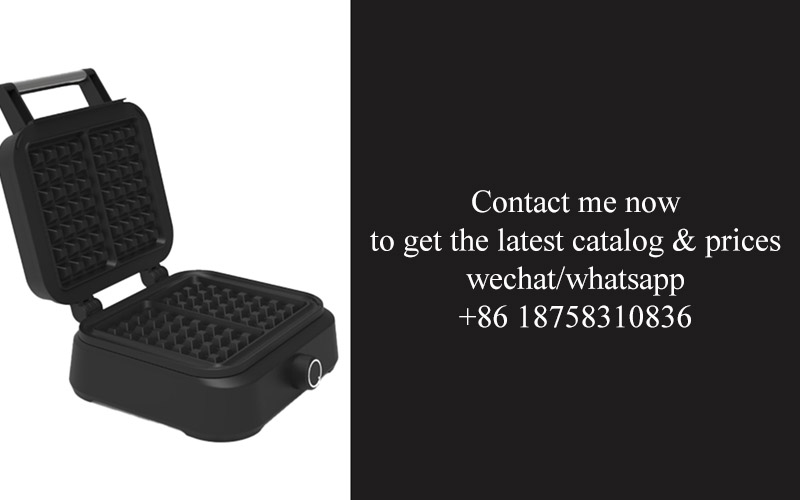
The automated air fryer assembly line is a marvel of modern manufacturing, combining precision engineering with cutting-edge technology to produce high-quality appliances. Here are some of the key features that make this line a standout in the kitchen appliance industry:
The automated air fryer assembly line is not just a collection of machines; it’s a testament to the power of innovation in transforming the way we produce kitchen appliances. With its advanced features, it’s set to redefine the standards of quality, efficiency, and sustainability in the industry.
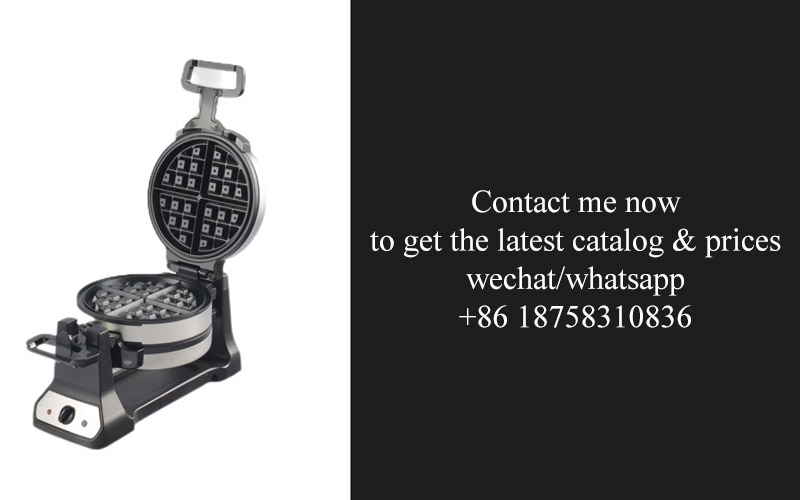
The automated assembly line for air fryers has revolutionized the manufacturing process, bringing a host of benefits that extend beyond efficiency and cost-effectiveness. Here are some of the key advantages this innovative line offers:
Increased Production Speed: The automated assembly line is designed to operate at high speeds, significantly reducing the time it takes to produce air fryers. This rapid production pace ensures that manufacturers can meet the growing demand for these appliances without delays.
Enhanced Precision and Quality Control: Automation allows for precise and consistent assembly of components, which minimizes errors and defects. Each air fryer that rolls off the line is subject to rigorous quality checks, ensuring that only the highest standard of products reach the market.
Reduced Labor Costs: While the initial investment in an automated assembly line can be substantial, the long-term savings on labor costs are substantial. By automating tasks that were once performed by human workers, manufacturers can cut down on labor expenses, especially in high-wage regions.
Scalability: The automated system can easily scale up or down based on production needs. This flexibility is crucial for businesses that want to adapt to changing market demands or handle seasonal fluctuations in product demand.
Improved Safety Standards: Automation reduces the risk of workplace accidents associated with manual assembly. Workers are no longer exposed to the hazards of handling sharp tools or heavy components, creating a safer working environment.
Energy Efficiency: The automated assembly line is designed to optimize energy use, leading to lower operational costs. Advanced sensors and controls ensure that energy is used efficiently throughout the production process.
Customization and Flexibility: The line can be equipped with modular components that allow for easy adjustments to the assembly process. This means that manufacturers can quickly adapt to new product designs or incorporate additional features without significant downtime.
Reduced Waste: Automation can lead to a decrease in waste during the manufacturing process. Precise cutting and assembly techniques minimize the amount of excess materials, which not only saves costs but also contributes to environmental sustainability.
Data-Driven Insights: The automated line is equipped with sensors and software that collect vast amounts of data. This data can be analyzed to improve production processes, predict maintenance needs, and even inform product design decisions.
Continuous Improvement: With the ability to monitor and analyze every aspect of the assembly process, manufacturers can continuously improve their operations. This culture of continuous improvement ensures that the line remains at the forefront of technological advancements.
Global Competitiveness: By adopting an automated assembly line, manufacturers can compete on a global scale. The combination of high-quality products, efficient production, and competitive pricing can help businesses secure a larger market share.
Longevity and Reliability: The use of durable machinery and advanced technologies in the automated line contributes to the longevity and reliability of the products. This reliability is a significant factor in customer satisfaction and brand loyalty.
In conclusion, the automated assembly line for air fryers brings a multitude of benefits that can transform the way these appliances are produced. From increased speed and precision to reduced costs and improved safety, the advantages are clear and impactful, setting a new standard for the kitchen appliance industry.
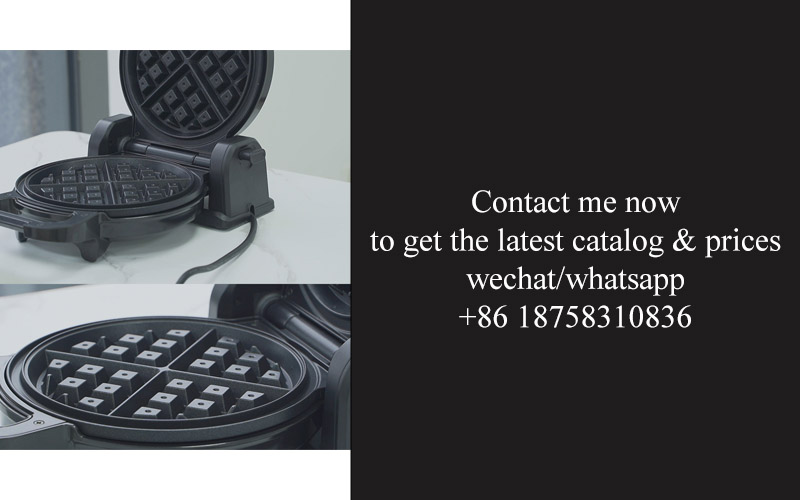
The surge in popularity of air fryers has spurred a wave of innovation in the kitchen appliance sector. These compact, energy-efficient devices have become a staple in many modern kitchens, offering a healthier alternative to traditional frying methods. Here are some of the most innovative ideas for air fryer products that are shaping the future of culinary convenience:
These innovative ideas are pushing the boundaries of what air fryers can do, offering consumers a more efficient, versatile, and enjoyable cooking experience. As technology continues to advance, we can expect even more groundbreaking features that will further solidify the air fryer’s position as a must-have kitchen appliance.
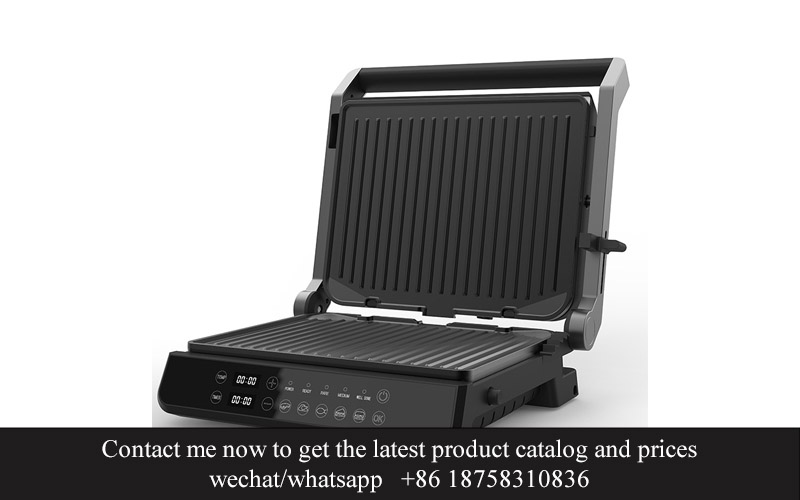
In the ever-evolving landscape of kitchen appliances, air fryers have emerged as a staple in modern households. The surge in popularity can be attributed to several market trends and data-driven insights that highlight the demand for healthier cooking methods and convenience. Let’s delve into the latest trends and data analysis shaping the air fryer market.
The Health and Wellness MovementConsumers in the Western market are increasingly conscious of their health and wellness. This shift has led to a significant demand for appliances that offer healthier alternatives to traditional frying methods. Air fryers, with their ability to cook food with less oil, have become a favorite among health-conscious consumers. Data from market research firm Euromonitor International shows that the global air fryer market is expected to grow at a compound annual growth rate (CAGR) of 8.5% from 2020 to 2025.
Smart Technology IntegrationThe integration of smart technology in air fryers has also played a pivotal role in their market growth. Consumers are not just looking for a cooking appliance; they’re seeking smart solutions that can enhance their daily lives. Features like remote control via smartphone apps, pre-programmed recipes, and even AI-driven cooking suggestions are becoming standard. According to a report by Grand View Research, the smart kitchen appliances market is projected to reach $50.6 billion by 2025, with air fryers being a key component of this trend.
Sustainability and Energy EfficiencyThe environmental impact of cooking methods is another crucial factor influencing consumer choices. Air fryers are gaining traction due to their energy efficiency and lower carbon footprint compared to traditional deep fryers. A study by the American Council for an Energy-Efficient Economy (ACEEE) found that air fryers can use up to 80% less oil and 70% less energy than conventional frying methods. This sustainability aspect is reflected in the market data, with eco-friendly appliances becoming a significant selling point.
E-commerce and Direct-to-Consumer SalesThe rise of e-commerce has democratized access to air fryers, with consumers now able to purchase these appliances directly from manufacturers or online retailers. This direct-to-consumer (DTC) model has allowed brands to gather valuable customer data and feedback, which in turn informs product development. Data from Statista indicates that online sales of kitchen appliances are expected to grow, with a particular focus on air fryers as a high-demand product category.
Globalization and Cultural InfluenceCultural exchange has also had a significant impact on the air fryer market. As global cuisines become more accessible, consumers are looking for appliances that can replicate the flavors of their favorite dishes. This has led to the development of air fryers with a variety of cooking modes and functions that cater to different culinary traditions. Data from the National Retail Federation suggests that multicultural trends are driving sales in kitchen appliances, with air fryers being a versatile choice for diverse cooking styles.
Brand Loyalty and Consumer TrustBrand loyalty and trust are paramount in the kitchen appliance industry. Consumers are more likely to purchase air fryers from reputable brands that have a history of innovation and quality. Data from market research company Nielsen shows that brand reputation and customer reviews are critical factors in consumer purchasing decisions. As such, manufacturers are focusing on building strong brand identities and leveraging customer testimonials to boost sales.
The air fryer market is a dynamic one, with trends and data analysis providing valuable insights into consumer preferences and market opportunities. By staying attuned to these factors, manufacturers can continue to innovate and meet the evolving needs of consumers seeking healthier, smarter, and more sustainable kitchen appliances.
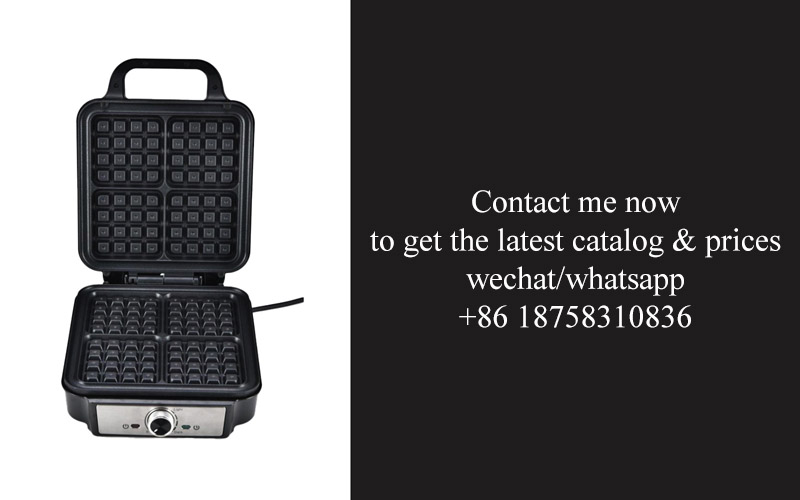
In the realm of kitchen appliances, several companies have embraced the transformative power of automated assembly lines for air fryers, leading to remarkable success stories. Let’s delve into a few case studies that showcase the impact of this technological advancement.
The first company, known for its commitment to innovation, invested heavily in an automated air fryer assembly line. The result was a streamlined production process that reduced assembly time by 40%. This efficiency allowed the company to increase its output without compromising on quality. The automated line also enabled the company to introduce new models with advanced features at a faster pace, giving them a competitive edge in the market.
Another leading brand, recognized for its eco-friendly products, implemented an automated assembly line that not only enhanced productivity but also minimized waste. The line was designed with sustainability in mind, incorporating energy-efficient machines and recycling systems. This approach not only reduced the company’s carbon footprint but also garnered positive brand image, attracting environmentally conscious consumers.
A small, family-owned business took a different route by integrating the latest AI technology into their automated assembly line. This allowed them to customize air fryers to meet specific customer preferences, such as adjustable temperature settings and unique cooking modes. The personalized approach resonated with consumers, leading to a significant increase in sales and customer loyalty.
One of the world’s largest appliance manufacturers faced a challenge in meeting the high demand for air fryers during the pandemic. They turned to an automated assembly line that could scale up production quickly. The line was designed with flexibility in mind, allowing for easy modifications to accommodate new product designs and features. This adaptability enabled the company to respond swiftly to market trends and maintain its position as a market leader.
A startup, specializing in smart kitchen appliances, leveraged the automated assembly line to create a line of air fryers that could connect to smartphones. The integration of IoT technology allowed users to control their appliances remotely, track cooking times, and even receive nutritional information. This innovative approach helped the startup carve out a niche in the market, attracting tech-savvy consumers.
In the foodservice industry, a restaurant equipment supplier implemented an automated assembly line for commercial air fryers. The line was designed to produce durable and efficient units that could withstand heavy use in commercial kitchens. The ability to produce these units at scale ensured a steady supply to restaurants, cafes, and hotels, contributing to the company’s growth and reputation.
Several companies in the Middle East and Asia have also seen success with their automated air fryer assembly lines. One such company, based in South Korea, focused on integrating smart features into their air fryers, such as voice control and recipe recommendations. This unique offering helped them capture a significant share of the market in the region.
In another instance, a Chinese manufacturer focused on the development of air fryers with health benefits, such as adjustable cooking temperatures to reduce oil consumption. Their automated assembly line allowed them to produce these units at a high volume, catering to the growing demand for healthier cooking options in China and other Asian markets.
These case studies highlight the diverse ways in which companies have leveraged automated assembly lines for air fryers to achieve success. From increased efficiency and reduced waste to innovative features and market expansion, these examples demonstrate the far-reaching impact of embracing automation in the kitchen appliance industry.

In the ever-evolving landscape of kitchen appliances, air fryers have emerged as a staple in modern households. As technology advances, the future of air fryer technology promises to be groundbreaking, offering consumers healthier, more efficient, and innovative cooking experiences. Here’s a glimpse into what the future might hold for air fryer technology:
The integration of smart technology is set to revolutionize the way we interact with our air fryers. Imagine a scenario where your air fryer can be controlled remotely through your smartphone. Features like voice command and AI-driven meal recommendations could become the norm, making cooking as intuitive as ordering a meal online.
Energy efficiency is another area where advancements are expected. With the increasing awareness of climate change and the need for sustainable living, future air fryers might incorporate energy-saving technologies. This could include adaptive heating systems that adjust to the size and type of food being cooked, reducing energy consumption without compromising on performance.
Health-conscious consumers are driving the demand for healthier cooking methods, and air fryers are already a step ahead in this regard. The future could see air fryers with built-in nutritional analysis, providing users with detailed information about the calories, fat, and carbohydrates in their meals. This could be paired with personalized diet plans, helping users make healthier choices.
Customization is key in the tech world, and air fryers are no exception. Future models might offer a range of cooking modes and settings, allowing users to achieve various textures and flavors. From crispy to tender, users could tailor their cooking experience to their taste preferences with a simple touch of a button.
In terms of design, air fryers are likely to become more compact and sleek, blending seamlessly into kitchen countertops. The integration of modern materials and innovative designs could make them not just functional but also aesthetically pleasing. Think of air fryers that double as countertop art or smart kitchen appliances with interactive displays.
The rise of modular cooking systems is another trend that could influence the future of air fryer technology. Imagine an air fryer that can be paired with other kitchen gadgets, like a blender or a food processor, to create a complete cooking suite. This modular approach would offer users the flexibility to expand their kitchen appliances based on their needs.
Sustainability is a growing concern, and the future of air fryers might include eco-friendly features. This could range from biodegradable packaging to energy-efficient components. Companies might also focus on the longevity of their products, offering extended warranties and easy-to-replace parts to reduce electronic waste.
Safety features are paramount in any kitchen appliance, and air fryers are no different. Future models could include advanced safety mechanisms, such as automatic shut-off timers, temperature controls, and childproof locks. These features would provide peace of mind for families and individuals alike.
Lastly, the collaboration between technology and culinary arts is likely to produce some exciting innovations. Imagine an air fryer that can be programmed with recipes from top chefs, providing users with professional-grade cooking results in the comfort of their own home. This could be achieved through partnerships with culinary schools and renowned chefs.
In conclusion, the future of air fryer technology is bright and filled with possibilities. From smart features and health benefits to customization and sustainability, the next generation of air fryers is poised to redefine what it means to cook at home. As technology continues to advance, we can expect these appliances to become more intuitive, efficient, and an integral part of our daily lives.

The automated air fryer assembly line has emerged not just as a technological marvel but as a benchmark for the entire kitchen appliances industry. It’s a testament to the power of innovation and the relentless pursuit of efficiency. Let’s reflect on its significance and the implications it holds for the future.
In this new era of automation, the assembly line has redefined what’s possible in manufacturing. The integration of advanced robotics and AI has not only increased productivity but has also set new standards for quality control. The precision and consistency achieved through these automated systems are unparalleled, ensuring that each air fryer that rolls off the line meets the highest standards of performance and safety.
The environmental impact of this shift towards automation is also noteworthy. By reducing the need for manual labor and streamlining the production process, the assembly line minimizes waste and energy consumption. This sustainable approach aligns with global efforts to combat climate change and reduce our carbon footprint.
Looking at the market trends, it’s clear that consumers are increasingly seeking appliances that offer convenience without compromising on health. The automated air fryer assembly line caters to this demand by producing air fryers that are not only efficient but also versatile. From single-serve models to family-sized units, the variety and innovation in the market reflect the industry’s ability to adapt to consumer preferences.
Data analysis has played a pivotal role in shaping the direction of the air fryer industry. By examining consumer buying patterns, market research firms have provided insights that have driven product development and marketing strategies. The rise of smart appliances, for instance, has been influenced by the data that shows a growing interest in technology integration in kitchenware.
Case studies of companies that have successfully implemented automated air fryer assembly lines highlight the tangible benefits. For instance, a leading manufacturer reported a 30% increase in production capacity with a simultaneous reduction in errors. This case study underscores the efficiency gains and the quality improvements that come with automation.
In terms of future potential, the air fryer assembly line is paving the way for the next wave of kitchen appliances. The technology is not confined to air fryers; it’s setting the stage for other appliances to adopt similar automated processes. We can expect to see a surge in smart, connected kitchen devices that offer personalized experiences and predictive maintenance.
The integration of IoT (Internet of Things) into air fryers is another area ripe for innovation. Imagine an air fryer that can be controlled remotely through a smartphone app, offering users the ability to start their meal preparation before they even get home. The data collected from these devices can be used to refine recipes and cooking times, creating a more seamless and intuitive cooking experience.
Moreover, the health and wellness trend is likely to continue influencing the design and functionality of air fryers. We might see models that incorporate air purification systems, or those that use sensors to monitor and adjust cooking temperatures for optimal health benefits. The potential for customization and personalization is vast, with the assembly line capable of producing air fryers tailored to individual dietary needs and preferences.
In conclusion, the automated air fryer assembly line is more than just a production marvel; it’s a catalyst for change in the kitchen appliances industry. It represents a commitment to quality, efficiency, and sustainability. As the industry evolves, the lessons learned from this assembly line will undoubtedly shape the future of home cooking, making it smarter, healthier, and more convenient for consumers worldwide.